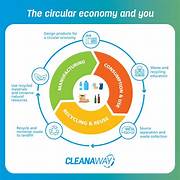Plastic Recycling Technology: An Approach Toward Circular Economy
In recent years, the growing awareness of environmental issues has sparked a global conversation about waste management and the sustainability of the products we use every day. Among the various materials contributing to the global waste crisis, plastic has emerged as a significant challenge due to its widespread use and slow degradation process. The need to find effective solutions for recycling plastic has never been more urgent. One of the most promising approaches toward tackling the plastic waste problem lies in the development and application of plastic recycling technologies. By creating efficient methods for processing and reusing plastic materials, we can move closer to achieving a circular economy—where products, materials, and resources are continually reused, reducing the need for new raw materials and minimizing waste.
This article delves into plastic recycling technology, exploring its importance, the various types of recycling methods, and how these technologies contribute to the development of a circular economy.
Understanding the Circular Economy
The concept of a circular economy is founded on the principle of reducing waste, promoting the reuse of materials, and creating a closed-loop system where products are designed for longevity, repairability, and recyclability. In a circular economy, products and materials are constantly cycled back into the supply chain, eliminating the need for new raw materials and reducing the environmental impact associated with waste disposal.
The circular economy contrasts with the traditional linear economy, where products are made, used, and disposed of in a “take, make, dispose” model. The goal of a circular economy is to minimize waste and the consumption of finite resources, ultimately leading to a more sustainable and environmentally friendly system.
Plastic recycling plays a pivotal role in the realization of this circular economy, as plastic products are often used only once and then discarded, creating large amounts of waste. Efficient plastic recycling technologies are essential to the circular economy, allowing plastics to be reused multiple times and reducing the environmental footprint of plastic production and disposal.
Types of Plastic Recycling Technologies
Plastic recycling can be categorized into several different types, each employing a distinct method of processing plastic waste. These technologies vary in terms of complexity, efficiency, and the types of plastics they can handle. The primary recycling technologies include mechanical recycling, chemical recycling, and energy recovery.
1. Mechanical Recycling
Mechanical recycling, also known as physical recycling, is the most common and widely practiced form of plastic recycling. In this process, plastic waste is collected, cleaned, and then mechanically broken down into small particles or flakes. These flakes are then melted and reformed into new products. The key advantage of mechanical recycling is its simplicity and the fact that it allows for the direct reuse of plastics in their original form.
The process typically involves several steps:
- Collection and Sorting: Plastic waste is gathered from various sources and sorted by type, as different plastics have different recycling requirements. Sorting is usually done manually or through automated systems that use sensors or air jets to separate plastics based on material types.
- Cleaning and Shredding: The sorted plastic is cleaned to remove contaminants such as dirt, labels, and adhesives. After cleaning, the plastic is shredded into smaller pieces, which are easier to process.
- Melting and Reformation: The shredded plastic is then melted and reformed into new products, such as bottles, containers, or even new plastic materials that can be used in manufacturing.
Mechanical recycling is an effective method for recycling commonly used plastics such as polyethylene (PE), polypropylene (PP), and polyethylene terephthalate (PET). However, it has limitations, particularly when dealing with mixed plastic waste or contaminated plastics. The quality of the recycled plastic often degrades, which limits its potential applications. Additionally, some plastics, such as polystyrene, cannot be easily recycled using mechanical methods.
2. Chemical Recycling
Chemical recycling, also known as feedstock recycling, is a more advanced technique that involves breaking down plastic waste into its basic chemical components or monomers. This process enables the recovery of valuable raw materials that can be used to produce new plastics of the same quality as virgin materials.
Chemical recycling is particularly useful for dealing with plastics that are difficult to recycle mechanically, such as multi-layered or mixed plastics. There are several types of chemical recycling processes, including:
- Pyrolysis: In this process, plastic waste is heated in the absence of oxygen to break down the plastic into smaller hydrocarbons. The resulting products can be used as fuels or further processed into new plastics.
- Hydrolysis: Hydrolysis uses water and heat to break down plastics such as PET into their original monomers, which can then be purified and reused to make new PET plastic products.
- Glycolysis: Similar to hydrolysis, glycolysis involves breaking down plastics like PET using glycol and heat, producing a recycled product that can be used to manufacture new plastic items.
Chemical recycling has the potential to handle a much broader range of plastic waste, including those that are currently non-recyclable using mechanical methods. It also allows for the production of high-quality recycled plastic, reducing the need for virgin plastic production. However, chemical recycling technologies are still in the early stages of development and are not yet as widely implemented as mechanical recycling. The processes are also more energy-intensive and costly, which can limit their scalability.
3. Energy Recovery
Energy recovery, also known as waste-to-energy (WTE), is a method of recycling plastics that focuses on converting plastic waste into usable energy rather than reprocessing the material itself. This is typically done through processes such as incineration or gasification, where plastics are burned to produce electricity or heat.
While energy recovery can reduce the volume of plastic waste and provide an alternative energy source, it is generally considered a last resort for recycling. Incineration, for example, can release harmful pollutants into the atmosphere, and the energy recovered is often not as efficient as renewable energy sources. Energy recovery is also not a sustainable long-term solution to the plastic waste crisis, as it does not address the core issue of reducing plastic production and consumption.
4. Biodegradable Plastics and Innovations in Recycling
In addition to traditional plastic recycling methods, researchers are also exploring the use of biodegradable plastics and innovative recycling technologies. Biodegradable plastics are designed to break down more quickly in the environment, reducing the long-term impact of plastic waste. However, these plastics still face challenges in terms of efficient recycling and compatibility with existing recycling systems.
Recent innovations in recycling technologies, such as enzyme-based recycling, are also showing promise. These technologies involve using enzymes to break down plastics into their chemical components, enabling the production of high-quality recycled plastic. Such methods could eventually complement or replace existing recycling processes.
Challenges in Plastic Recycling and the Path Forward
While plastic recycling technologies have advanced significantly in recent years, several challenges remain. The efficiency of these technologies is often limited by factors such as contamination, the complexity of plastic products, and the difficulty of separating different plastic types. Moreover, the economics of recycling—such as the cost of collecting, sorting, and processing plastic waste—can make it difficult for recycling programs to be profitable.
To address these challenges and move toward a more sustainable future, several steps must be taken:
- Improved Collection and Sorting: Effective waste management systems that prioritize the collection and sorting of plastics can help increase the quality of recycled plastic and reduce contamination.
- Design for Recycling: Manufacturers can play a critical role in improving plastic recyclability by designing products that are easier to recycle, using fewer plastic layers, and reducing the use of non-recyclable materials.
- Investment in Research and Development: Continued investment in R&D for innovative recycling technologies, such as chemical recycling and enzyme-based methods, can help overcome current limitations and improve the efficiency of recycling processes.
- Public Awareness and Policy Support: Governments, businesses, and consumers must work together to raise awareness about the importance of recycling and to support policies that promote sustainable practices and the circular economy.
Conclusion
Plastic recycling technology is a crucial component of the transition to a circular economy. Through advancements in mechanical, chemical, and energy recovery recycling methods, as well as ongoing research into new technologies, the plastic waste crisis can be mitigated. However, overcoming the challenges of plastic recycling requires collaboration across industries, investment in innovation, and a global commitment to reducing plastic waste.
By integrating effective recycling technologies into our waste management systems, we can reduce our reliance on virgin plastic, lower carbon emissions, and create a more sustainable future for generations to come. The goal is to move from a linear “take, make, dispose” model to a circular economy where plastics are continuously reused, helping to preserve valuable resources and minimize environmental harm.


